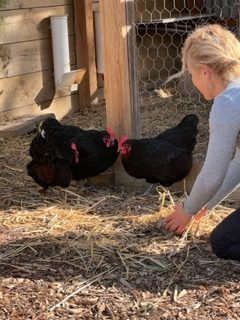A few weeks ago, I discussed the toxic lead levels which are found in backyard chooks. In short, backyard chooks in inner city areas like Sydney, have up to 40 times higher lead content than your factory chook. I know right – this is shocking!
Well, while we’re onto these issues, you should also be mindful about toxic mould in hay. Moulds commonly found in hay include Aspergillus, Penicillium, Cladosporium, Fusarium and Alternaria. Many of these produce mycotoxins which can have devastating impacts on human health.
Unfortunately most hay is contaminated because it’s exposed to rain, so if you have – or are recovering from – Chronic Inflammatory Response Syndrome (CIRS), DON’T HANDLE HAY unless you’re prepared to wear a full-face respirator with P3 filter, gloves and disposable coveralls.
How can you tell if your hay is mouldy?
- Smell: fresh hay has a sweet woody scent, whilst mouldy hay smells damp or musty.
- Colour: fresh hay such as lucerne, is green in colour which indicates it wasn’t exposed to adverse conditions during curing or storage. Mouldy hay looks pale yellow or brown in colour.
- Mouldy hay tends to be more dusty.
- Heat: excess heat coming from the centre of the hay bale indicates high microbial growth such as bacteria and mould.
Tips when dealing with hay
1. Buy fresh hay which smells sweet and woody – and is green in colour.
2. Store the hay in a dry area away from sustained humidity and rain.
2. Wear a full-face respirator (if not a P2 mask with wrap around eye googles) and gloves when dealing with hay – or get someone else to do this!
For more from ACES on how to look after your home, visit here.


